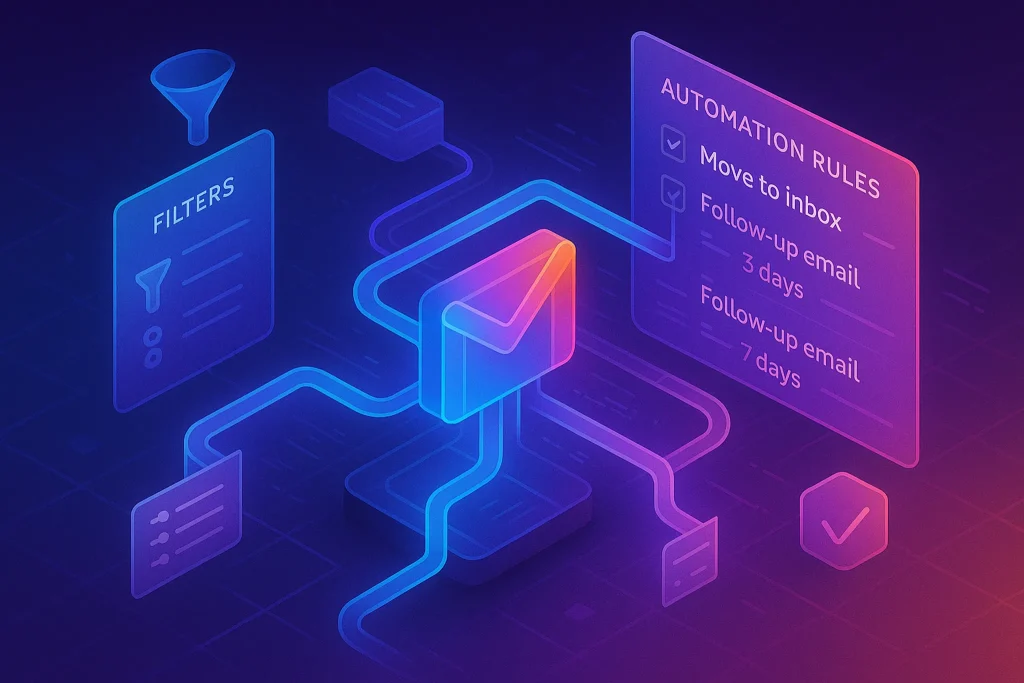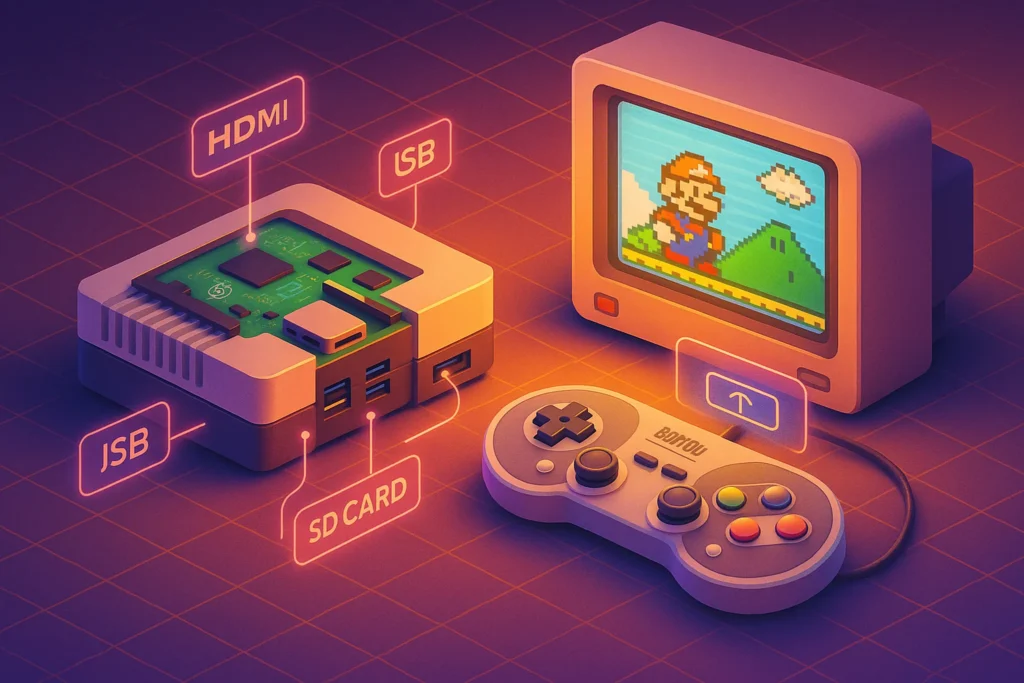-This post may contain affiliate links. If you click on one and make a purchase, I may earn a small commission at no extra cost to you.-
💡 Why This Guide Matters
You don’t need a computer science degree—or money—to start coding. In 2025, free and high-quality learning paths are everywhere, offering structured lessons, supportive communities, and practical projects. This guide provides an evergreen roadmap to teach yourself programming from scratch, using only free resources and a bit of resolve.
🛣️ Step 1: Pick a Beginner-Friendly Language
🔎 Why Python or JavaScript?
-
Python has a gentle learning curve and is widely used in automation, AI, and scripting—perfect for early confidence-building.
-
JavaScript gives immediate feedback in the browser, making it ideal if you’re interested in web development.
👶 What to Avoid Early On:
-
Avoid languages like C++, Rust, or Java at the beginning unless you’re particularly motivated by low-level systems or mobile development—they can overwhelm beginners.
✅ Extra Tip:
Pick one language and stick with it for at least 1–2 months. Switching too early leads to shallow understanding.
Choose a language that’s easy to learn, versatile, and well-supported:
-
Python: Known for its simple syntax and readability. Excellent for web, automation, data science, and AI.
-
JavaScript: The language of the web. Learn front-end (React/Vue) and back-end (Node.js).
-
Scratch/Blockly: Block-based visual tools great for absolute beginners to grasp basic programming concepts.
💡 Open with Python or JavaScript to build foundational logic, then explore languages aligned with your goals.
🛠️ Step 2: Set Up Your Development Environment
🧰 Common Beginner Mistakes to Avoid:
-
Don’t overcomplicate your setup. Installing dozens of extensions or using advanced IDEs (like IntelliJ or Eclipse) can distract you from learning the actual language.
-
Stick with VS Code and learn basic navigation, running code, and using the integrated terminal.
🎯 Essential Settings for Beginners:
-
Enable Auto Save to prevent losing progress.
-
Turn on Line Numbers and Mini Map for better navigation.
-
Add a Theme that’s easy on your eyes (e.g., Dracula, One Dark Pro).
A smooth learning path starts with a solid coding setup:
-
Code editor: Use Visual Studio Code (cross-platform, free, and widely used). For Python, beginners also find Thonny helpful .
-
Task manager: Git Bash or Terminal with Git installed.
-
Extensions: Linting (ESLint/PyLint), formatting (Prettier/Black), and language helpers.
-
Version control: Create a free GitHub account to manage projects and practice versioning.
Set aside 30 minutes at the start to install these essentials—they’ll save you headaches later.
📚 Step 3: Build Your Learning Path with Free Resources
📅 Suggested Weekly Rhythm:
-
Day 1–2: Watch 1 beginner video (~30 mins), take notes.
-
Day 3–5: Do interactive lessons (e.g., freeCodeCamp, Codecademy).
-
Day 6–7: Apply what you’ve learned by building a small project or solving 3–5 simple coding challenges.
🧠 Learn by Explaining:
-
Keep a markdown “Dev Log” where you write summaries of concepts you learned each week. Explaining something in your own words deepens understanding.
🧭 Structured Platforms
-
freeCodeCamp: Offers 1,400+ hours of interactive web development curriculum, certifications, and real-world projects.
-
Codecademy: Free introductory courses in Python, JavaScript, HTML/CSS with optional paid progression .
-
Khan Academy: Teaches JavaScript, SQL, and more—with beginner-friendly pacing and quizzes.
-
The Odin Project: Community-driven full-stack web dev curriculum built on free resources.
📺 YouTube & Live Coding
-
freeCodeCamp YouTube: Full language tutorials and live coding sessions
-
Traversy Media, Programming with Mosh: Beginner project-based lessons.
-
Live coding on Twitch: Watch pros code and ask questions in real time.
📝 Practice & Challenges
-
Exercism: Free coding exercises with mentor feedback in 70+ languages.
-
freeCodeCamp challenges: Ask for help in forums, earn badges through projects.
-
Codewars & LeetCode: Gamified and algorithmic problem-solving platforms.
🧩 Step 4: Apply What You Learn with Projects
📌 How to Choose Projects:
-
Pick something you want to use (e.g., a personal habit tracker, portfolio site, calculator). Relevance increases motivation.
-
Start small, then gradually “layer” on features—e.g., from static HTML to form handling to API integration.
📸 Project Documentation Tips:
-
Add a README.md to every GitHub project
-
Include: project purpose, technologies used, screenshots, and what you learned
-
Add comments in your code—even if just for yourself
Why project-based learning is critical:
-
Turns theory into action
-
Builds confidence and portfolio
-
Enhances problem-solving and debugging skills
Project ideas by stage:
-
Beginner: “Hello World,” calculator, to-do list
-
Intermediate: Personal blog with a backend, weather app using an API, simple game (JS or Python)
-
Advanced: Data visualizer, chatbot with GPT API, full-stack app with user authentication
Document progress in a GitHub repo. Even small README updates show learning intent and build an online presence.
🧠 Step 5: Build Consistency & Motivation
📈 Track Your Progress Visibly:
-
Use GitHub’s contribution graph as motivation
-
Create a learning tracker spreadsheet with checkboxes for modules, projects, challenges
-
Join a 100DaysOfCode challenge on Twitter or Dev.to for community accountability
🧩 Mini-Habits Work:
-
Even 15 minutes of focused practice is better than none. Consistency beats cramming every time.
Learning is a marathon, not a sprint:
-
Daily habit: 30–60 minutes daily beats weekend marathons
-
Milestones: Track modules completed, projects finished
-
Study groups: Join Discords, subreddits like r/learnprogramming or local Slack channels
-
Accountability partners: Code together, review each other’s work
Leverage open-source communities like freeCodeCamp for feedback and camaraderie.
🔧 Step 6: Deepen Knowledge—Algorithms & CS Basics
📦 What to Focus On First:
-
Data Structures: Arrays, Linked Lists, Hash Maps, Stacks, Queues
-
Algorithms: Sorting (Bubble, Merge, Quick), Searching (Binary Search), Recursion basics
-
Big O Notation: Learn to estimate how your code performs as data grows (just the basics at this stage)
🎯 Beginner-Friendly Resources:
-
Visual Algo (visualgo.net): Visualizes data structures & algorithms interactively
-
CS50x: Harvard’s free computer science intro is beginner-friendly but deep
-
NeetCode 150: Structured LeetCode path sorted by topic and difficulty
🧠 Smart Practice Strategy:
-
Do 3 easy problems a week and focus on solving them without looking at solutions immediately
-
Write reflections after each problem: “What did I miss? What will I try next time?”
Once comfortable with basics, level up:
-
Learn data structures (arrays, linked lists, hashes) and algorithm patterns
-
Use LeetCode for daily “easy” problems and contests
-
Study CS50x from Harvard on edX for a solid intro to computer science
Understanding fundamentals builds problem-solving muscle and employment-readiness.
✅ Step 7: Assemble Your Learning Roadmap
📊 Customize to Your Goals:
-
Want to build websites? Focus more on HTML/CSS + JavaScript → then React
-
Interested in AI or data science? Python + Pandas/Numpy → then ML libraries like scikit-learn or Hugging Face
-
Going for job-ready skills? Combine project-based learning with coding challenges + GitHub portfolio
🗂️ How to Document Learning:
-
Create a Notion or Google Doc with:
-
Weekly goals
-
Links to completed lessons/projects
-
Challenges faced and how you solved them
-
-
Revisit this log monthly to adjust your path
🚀 Career Progression Milestone Ideas:
-
Build a portfolio website with links to your projects and resume
-
Contribute to 1 open-source issue (start small—typos/docs/UI bugs)
-
Apply to internships or freelance gigs—even unpaid—once you’ve built 3–5 real projects
Here’s a simple structured plan:
-
Weeks 1–4: Python basics (freeCodeCamp/Codecademy + small projects)
-
Weeks 5–8: JavaScript, DOM manipulation, basic web apps
-
Weeks 9–12: Project-based learning (e.g., weather app, simple blog)
-
Weeks 13+ : Algorithms, LeetCode, open-source contributions, portfolio polish
Adapt pace and languages to your goals. Focus on finishing projects over collecting knowledge.
🆓 Step 8: Leverage LLMs & AI Tools
🤖 What Can AI Tools Actually Help You With?
-
Explain code: Paste in a snippet and ask ChatGPT or GitHub Copilot to explain line-by-line
-
Debug errors: Describe the bug, include the error message and context—LLMs can usually spot logic flaws fast
-
Refactor code: Get suggestions to simplify or optimize your functions
-
Practice interviewing: Ask for sample coding questions and practice answering them with feedback
🧠 Best Practices:
-
Don’t use AI to write entire projects—use it to clarify, correct, or optimize your own attempts
-
Double-check any suggested code. LLMs can hallucinate or skip edge cases.
-
Save useful AI interactions into your coding journal—they become reusable notes
🌍 Tools You Can Try:
-
ChatGPT (Free or Pro)
-
GitHub Copilot (free for students)
-
Khanmigo (Khan Academy’s AI coding assistant for structured tutoring)
In 2025, AI accelerates learning:
-
Use ChatGPT to explain syntax, logic, or debugging
-
Ask for code suggestions or best practices
-
Analyze your own code for inefficiencies
-
But always write your own code too—avoid copy-paste dependency
AI is a teaching aid, not a shortcut.
🧠 Final Mindset Tips
-
Accept frustration—debugging is growth
-
Ask for help early, not later
-
Build a project for fun, not just grading
-
Celebrate small wins—first app deployed, first bug fixed
Stay curious. Consistency compounds over time.
❓ FAQ – Learning to Code Without Formal Classes
Q1: Do I need a degree to become a programmer?
A: Not at all. Many successful developers are self-taught. What matters is real skills, a strong portfolio, and problem-solving ability—not your diploma.
Q2: How long does it take to learn programming as a beginner?
A: With 1–2 hours a day, you can grasp the basics in 2–3 months, build small projects in 3–6 months, and apply for internships or freelance gigs in 6–12 months, depending on your consistency.
Q3: What’s the best free coding platform to start with?
A: freeCodeCamp is the most complete all-in-one option, with interactive lessons, certification paths, and real-world projects. Pair it with YouTube and a code playground like Replit or Glitch.
Q4: Should I learn multiple languages at once?
A: No—focus on one language (like Python or JavaScript) until you’re comfortable building small apps. You can expand later once you’ve built foundational thinking.
Q5: Is AI replacing programmers?
A: No—but AI is changing how programmers work. It’s a tool that makes devs faster, not obsolete. Learning how to use AI alongside your coding skills gives you a competitive edge.
💬 Would You Bite?
Which free coding resource are you starting with—and why?
Drop a comment so we can cheer you on and swap learning tips! 👇



